The Monastery of Saint John in the Wilderness is a majestic monastery outside Jerusaelm. Located a short distance from Ein Karem, the traditional birthplace of Saint John the Baptist
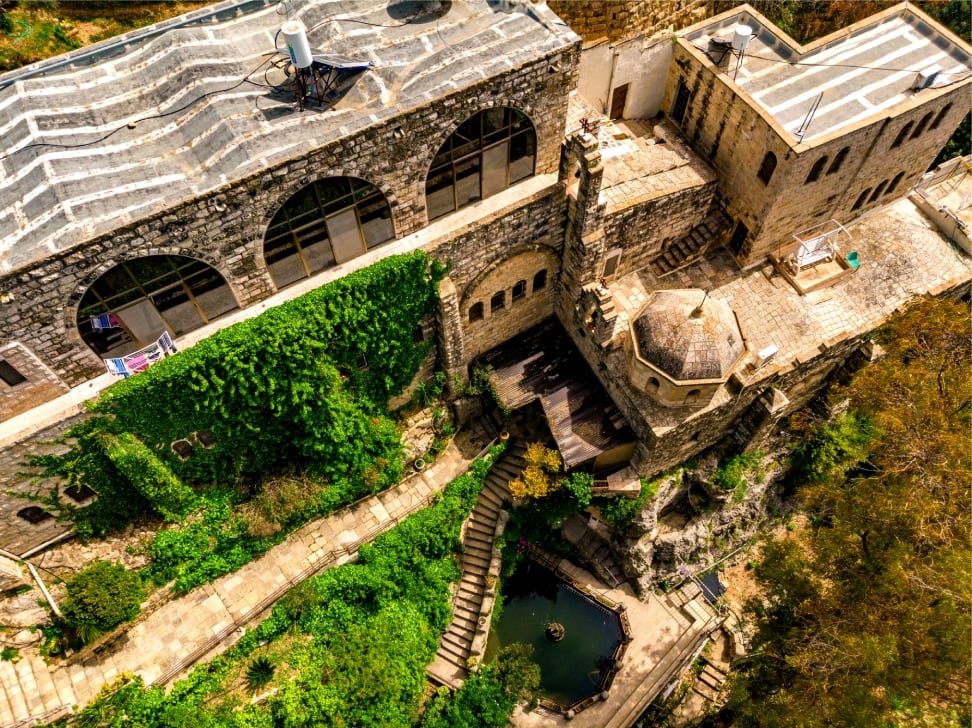
So the Monastery of Saint John in the Wilderness is built next to a spring on a wooded hillside outside Jerusalem. It is the traditional place where Saint John the Baptist was going into the wilderness. The site is Ain el-Habis, meaning “spring of the hermit,” and is just south of Jerusalem in the Judean Hills. John the Baptist’s mother’s grave, Elizabeth, is a little higher up the slope.
Primarily, the monastery commemorates the “wilderness” in which St. John the Baptist lived as an orphaned child and throughout the years, which prepared him for public ministry. According to tradition, John was born some 3 km away. Today there is a church that commemorates the birthplace of John. In addition, Luke tells us that John:
“grew and became strong in spirit, and he lived in the desert until he appeared publicly to Israel”.
Gospel According to Luke
The History of the Monastery of Saint John in the Wilderness
So the first Christian monastery on this site was built in the 6th century. After being destroyed, it was restored and expanded in the Jerusalem Kingdom of the Crusaders era. The Franciscans revived the monastery in the 1920s and launched a large-scale construction here. The current sanctuary is designed by the Italian architect Antonio Barluzzi.
The monastery of St. John was abandoned in the 1960s and completely deserted. At the beginning of the 21st Century, the monastery buildings were rented by Greek Catholic Christians but later returned to the Franciscans who still own them today.
Christian Monasticism in the Judaean Desert
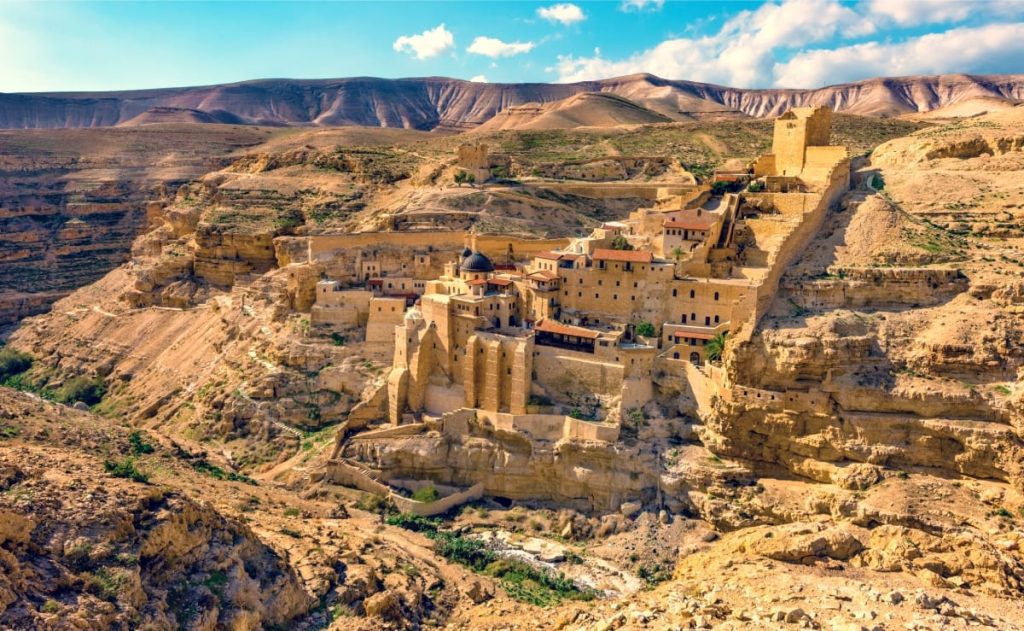
Thing to See in the Monastery of Saint John in the Wilderness
Directly beneath the monastery’s main temple is John the Baptist’s cave. A staircase of 21 descending steps leads to the cave, which measures six by three meters and is two meters high. An elevation opposite the entrance is considered the bed of John the Baptist. It is believed that the prophet lived here in solitude until he retired into the wilderness.
Below the monastery are two caves that hold religious significance. The first contains water and is used for baptisms and ritual bathing. The second is believed to be where John’s parents hid with young John to save their child from Herod’s massacre of the innocents.
Church of Visitation
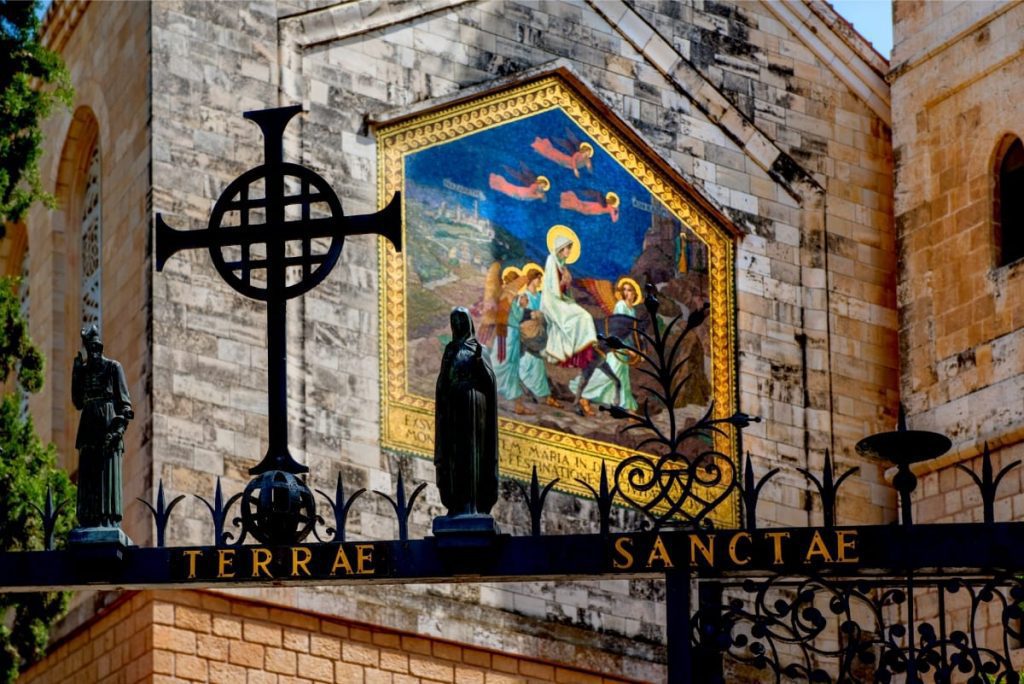
Today, a fresco can be seen at the back of the cave depicting John and his mother hiding. Just below it, there is a special place where believers leave notes with prayer requests or words of gratitude for the help received through prayers to John the Baptist.
Visitors to the monastery are welcome throughout the year. An exceptional evening prayer service is held annually on June 23rd to commemorate John the Baptist growing strong in the spirit in the wilderness.
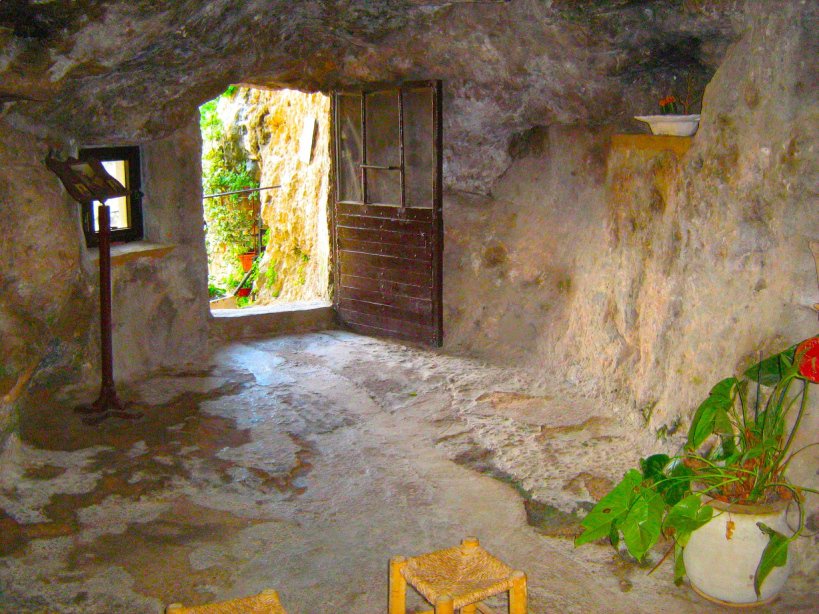
Credit: Ori~, CC BY-SA 3.0, via Wikimedia Commons
The Chapel of St. Elizabeth
Slightly further up the slope along a picturesque path is the octagonal chapel of St. Elizabeth. The entrance to the crypt is hidden behind a small door. There it is believed the ashes of the mother of John the Baptist are buried.
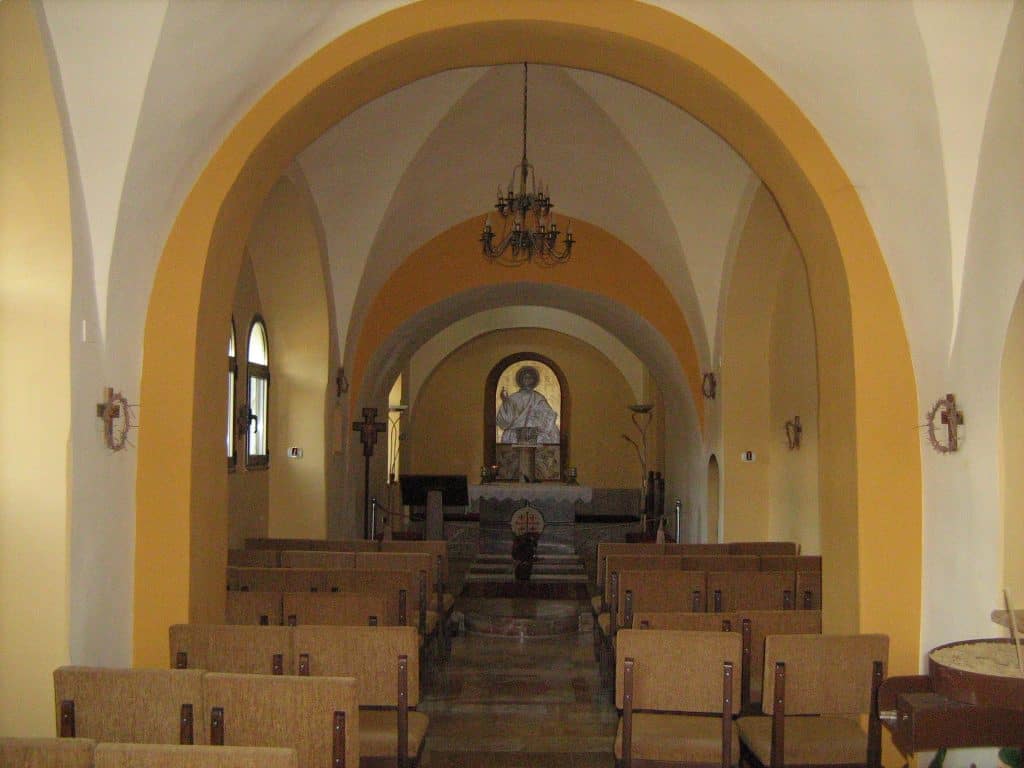
Credit: Ori~, CC BY-SA 3.0, via Wikimedia Commons
One of the few icons in the austere chapel including an image of John the Baptist. You can see him holding an unfolded scroll with an inscription in Hebrew. Outside the chapel, there are stunning views of the gorge of the Sorek River and the Sataf behind it. The gorge is famous for excavating the camps of ancient people from 11-8 millennia BC.
Visiting the Monastery of Saint John in the Wilderness
Furthermore, visitors are welcome throughout the year, and entrance to the Monastery of St. John is free.
In addition, an exceptional evening prayer service is held annually on June 23rd to commemorate John the Baptist growing strong in the spirit in the wilderness.
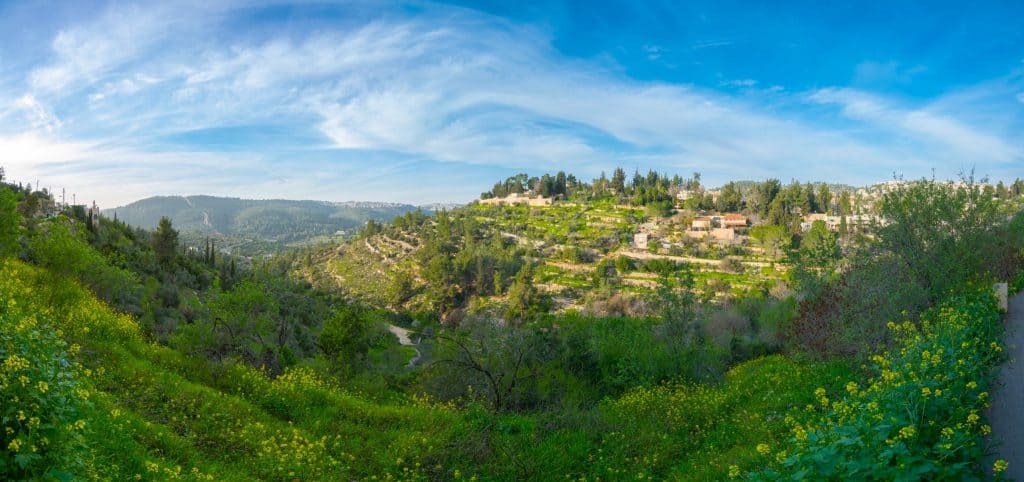
Last, near the cave, is a cold spring known as Ein el-Habis (the hermit’s spring) by the Arabs. The water from it runs into the bath, where the pilgrims arriving at the holy monastery plunge. Baptisms are also held here. The bath is decorated with figures of saints, lanterns, and other decorative elements in the Catholic style.

